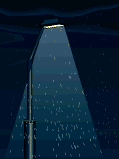Warwickshire's bats
Of the 18 species of bat found in the British Isles, 14 have been recorded
in Warwickshire.
Download a pdf copy
of "Focus On Bats" (661Kb) which is a general introduction to
bats and their life styles. It also gives conservation advice about how
to manage their colonies in buildings and other roost places.
Six species of bats are used as an "indicator species" to measure how UK
wildlife is faring. The six species are Daubenton's,
Noctule, Lesser
Horseshoe, Common Pipistrelle,
Soprano Pipistrelle and Serotine. The bat indicators are compiled by the Bat Conservation Trust
using data collected annually from the
National Bat
Monitoring Programme (NBMP).
In addition to taking part in the NBMP, we assisted Warwickshire County Council with the
Warwickshire Barbastelle Bat Project.
where to see bats
 On
fine summer nights bats start leaving their day roosts around dusk. This
is often the best time to try and spot their silhouettes against the sky
before it gets too dark.
On
fine summer nights bats start leaving their day roosts around dusk. This
is often the best time to try and spot their silhouettes against the sky
before it gets too dark.
Flying uses up a lot of energy so bats need to catch plenty of insects
to stay healthy; a tiny Pipistrelle may
eat up to 3,000 insects in one night! So, the best places to look for
bats is where insects gather at night - around woodland, hedgerows, rivers,
ponds, lakes, gardens, or even white street lights.
According to an on-line survey conducted by the Mammal
Society in 2000, with 34% of the votes, Pipistrelle bats are collectively
the most popular type of bat followed by the Brown/Grey Long-eared bats
and then the Greater/Lesser Horseshoes.
In the summer you could find out about locally organised bat walks (see
our Diary page) where "bat
detectors" allow you to listen in to the ultrasonic calls of
bats as they find their way around in the dark.
bats recorded in Warwickshire
bats in decline
As recently as the 1950's colonies of thousands of bats could be seen
but today even our most common bat, the Pipistrelle, appears to have suffered
serious decline. It is thought to be the result of many factors:
- Timber treatment with toxic chemicals used in lofts can be fatal to
bats
- Roost sites are lost due to vandalism, blocking of access holes, mine
capping and tree felling
- General habitat destruction
- Changes in agricultural practices reducing the number and variety
of insects
bats and the law
Under the 1981 Wildlife and Countryside Act and the Countryside and
Rights of Way Act 2000, bats have become amongst
the most protected animals in Britain. The Act makes is illegal to intentionally
kill, injure or disturb a bat, or to damage or obstruct access to any
place that a bat uses for shelter. See our pages on bats
and the law.